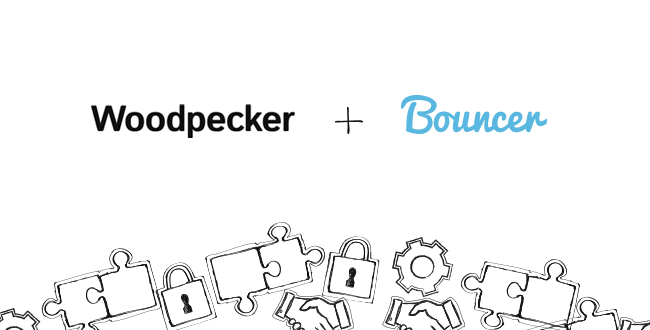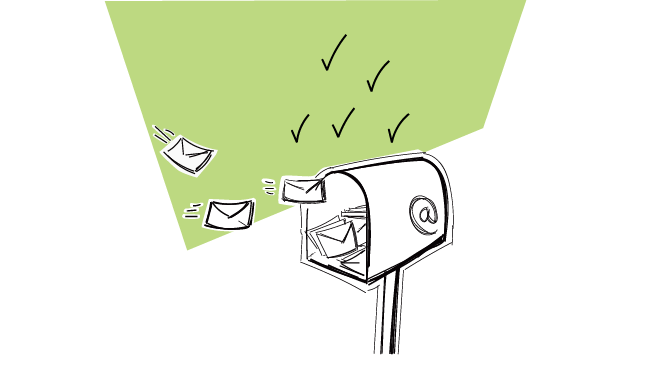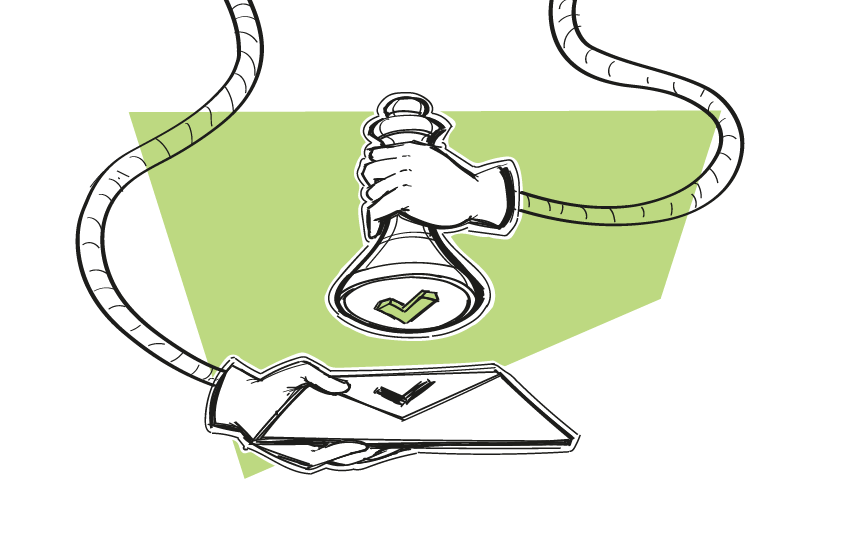Preparing an outbound email campaign, no matter if your goal is to reach potential customers or find a VC to fund your startup, takes lots of time. You have to collect the addresses first, then do the segmentation and write a compelling, personalized email.
It would be a huge waste of your time if your emails weren’t delivered to your contacts’ inbox and landed in SPAM instead. And the deliverability of your emails depends greatly on your sender reputation. You should take good care of it and prevent it from any damage.
One thing that seriously harms your sender reputation is sending emails to invalid addresses, which causes them to bounce back. To avoid that, you should always do email validation before clicking “send”.
If email validation is something new to you, you’ve come to the right place. Keep on reading to learn how it works and why it’s so important.
What is email validation and how does it work?
Email validation is a process of verifying email addresses to catch any nonexistent, invalid, undeliverable ones, and remove them from your list.
That’s the general idea behind it. In more technical details, the email validation process includes:
- checking the syntax of an email address, for example, to see if there are any @ missing or misplaced
- verifying receiver’s domain by checking its DNS records to confirm if the server is able to receive emails
- using the SMTP protocol to determine if the receiver’s mailbox exists and can receive emails
That’s how the email validation process works in a nutshell. Of course, it can include some extra checks too, for example checking for disposable email addresses that lower the quality of your list.
Why do you need to verify your email list?
I already mentioned at the beginning that cleaning your email list of invalid email addresses improves email deliverability. It also keeps your domain safe.
Sending emails to addresses that don’t exist causes these emails to bounce back to your inbox. A high bounce rate (which is the percentage of undelivered emails out of all emails in your campaign) may harm your sender reputation, or even worse: get your domain blacklisted.
Why is that so? A lot of bounces alarms the email service provider, who flags you as a potential spammer because spammers usually don’t care about their email list quality. When your sender reputation gets damaged, your emails will go to the SPAM folder or won’t be delivered at all.
The worst-case scenario, when you ignore a bounce rate higher than 2% and you don’t do anything about it ASAP, is that your domain may end up on a blacklist. And in many cases getting off a blacklist is like escaping from Alcatraz prison: very difficult and practically impossible. Quite often it’s easier to set up a new domain, then removing the old one from a blacklist.
So to prevent this nightmare from happening, take good care of the quality of your email list. Don’t buy ready-made email lists and always verify the email addresses shortly before sending a campaign. This takes us to the next question…
How can you verify and validate emails?
The truth is, without an email verification tool, you can’t really check if email addresses on your list are valid unless you actually send emails to them, see if you get any bounces, and then remove all invalid addresses by hand. This makes little sense, though, because each bounced email poses a risk to your sender reputation, so you want to avoid bounces in the first place.
As mentioned above, to verify email addresses before sending, you can use email verification tools, or so-called email verifiers or email checkers. Such tools will identify which email addresses on your list are undeliverable (would bounce back) and which ones are safe to send.
How do they work? In layman’s terms, email validation tools connect with your email recipient’s server, analyze its response and give you the information about which emails are invalid. Without sending an actual email.
Side note: There are quite a few email verification and validation tools you can choose from. We’re working on putting together a comparison list featuring some of them. We’ll publish it soon, stay tuned!
What’s next?
Once your email list is verified, you can then upload it to your email automation tool.
However, if you use Woodpecker, you don’t have to worry about using an external email verification and validation tool because our app has built-in integration with Bouncer. Bouncer verifies your email list right before sending and if it finds any invalid addresses, Woodpecker simply won’t send your message to them. They will show up as “Invalids” in your campaign’s stats:
The best thing about this 2in1 solution is that you get additional security with no effort. You don’t need to worry about whether the email addresses on your contact list are deliverable, undeliverable, or risky – Bouncer + Woodpecker does that for you in the background.
What’s in it for you?
Email validation is your safeguard, which can protect you from some serious problems. It’s a must if you want to maintain an impeccable sender reputation and keep a high inbox placement score.
However, there are more steps to ensure your email campaign gets delivered without any hiccups, which include technical settings and some best practices regarding email content. Check if you follow them:
14 Deliverability Checks to Carry Out Before Sending Your Cold Email Campaign >>
FAQ on email validation
What is email validation?
Email validation is a process involving email verification and domain verification to ensure an email address is properly formatted and operational. This helps improve the success rate of email marketing campaigns by reducing bounce rates and preventing emails from being marked as spam.
How can I validate my email?
To validate your email, use email address verification services that check for correct syntax, verify if the domain exists, and ensure the specific mailbox is active. This is often a part of post email validation routines to maintain clean email lists.
How to make an email valid?
Making an email valid involves performing domain verification to confirm the email’s domain is active and capable of receiving emails. This step is crucial before launching any email campaigns to ensure high deliverability and engagement rates .
How to check if an email is correct or not?
Checking if an email is correct can be efficiently done using automated tools that handle email verification, which includes syntax checks and domain verification. These tools help ensure that the email addresses in your database are accurate and functional.
How do you test email deliverability?
Testing email deliverability involves using specialized services that simulate sending to check if emails actually reach the inboxes and not the spam folder. These tests help identify potential spam complaints and address them proactively to enhance the performance of email marketing efforts.
READ ALSO

Get your Prospects’ Email Addresses Verified: Native Bouncer Integration
We’re excited to announce that Woodpecker has joined forces with Bouncer to help you decrease your bounce rate, boost deliverability and protect your sender’s reputation. What is Bouncer? It’s a tool that verifies your prospects’ email addresses and sends messages only to validated email addresses, ensuring not a single unwelcome email address slips through. We’ve been testing Bouncer and other email verification tools for some time to choose the one that works best for us and offers the most value to our users, and Bouncer turned out to be the one we were looking for.

How to Lower the Bounce Rate of Your Email Outreach with Human-driven Data Enrichment
Time for another guest post on our blog. This time it covers a topic that is very on trend right now, data enrichment. And it shows how to use data to increase your email deliverability. Ok, let's give the stage to Anastasia from CIENCE who's an expert in that field.

Why Emails Bounce Back: 10 Most Common Issues
A lot of factors come into ensuring email deliverability. As salespeople, we’d like to believe that being caught up on email protocols (SMTP, POP3 or IMAP), creating a converting subject line and relevant content is enough to make sure every email finds its reader. Unfortunately, the reality is different — even when it seems like you’ve done everything the right way, bounce rates are still through the roof. In this guest post, Andriy Zapisotskyi, a Growth Manager at Mailtrap.io is going to take a closer look at email bounces — their most common two kinds and the reasons behind them.

